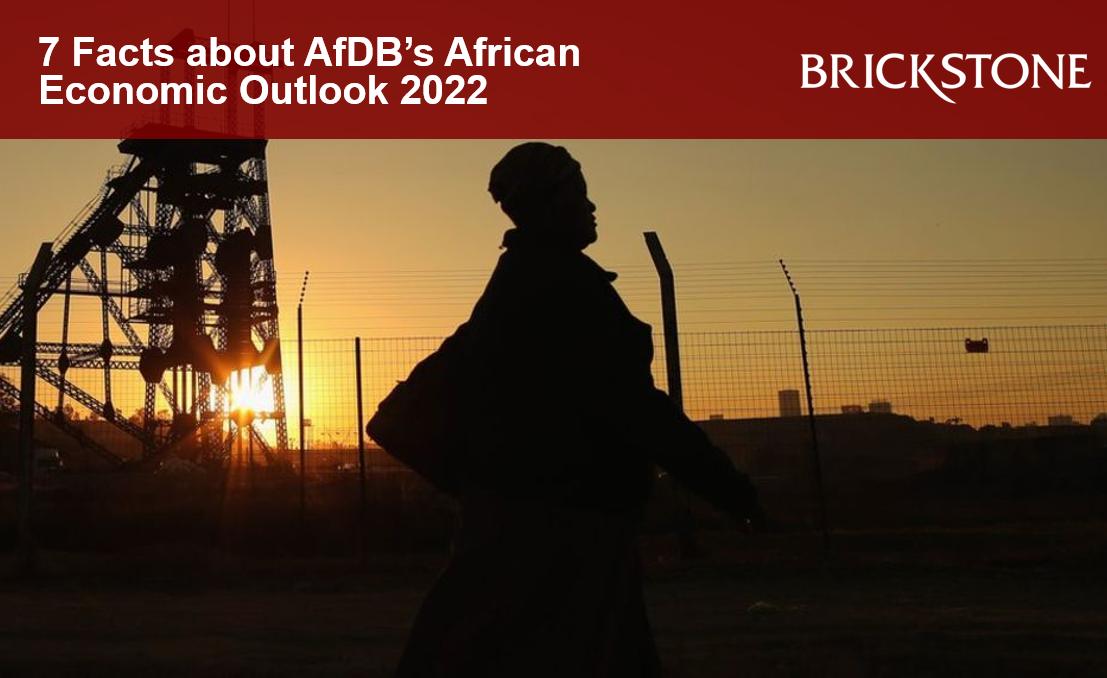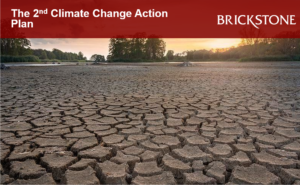Facts about AfDB’s African Economic Outlook 2022
The theme of the African Economic Outlook 2022 is Supporting Climate Resilience and a Just Energy Transition in Africa. It highlights Africa’s economic performance and future prospects, climate change as a growing threat to lives and livelihoods in Africa, and financing options, instruments and strategies towards achieving climate resilience and a just energy transition in Africa by mid-century.
This article by Brickstone reviews the AfDB’s African Economic Outlook 2022, highlighting key facts and takeaways.
Facts about AfDB’s African Economic Outlook 2022
African countries are experiencing unprecedented economic disruptions with major adverse impacts on development. According to the African Development Bank’s African Economic Outlook 2022, Africa has accounted for a negligible 3% of cumulative worldwide CO2 emissions historically despite having 17% of the current global population. However, climate change and extreme weather events disproportionately affect Africa, with severe economic, social, and environmental consequences for its people.
Contributing to this downturn is the effects of pandemic and Russia-Ukraine war, which is projected to leave a lasting impression for over several years, if not as much as a decade.
Accordingly, around 30 million people in Africa were pushed into extreme poverty in 2021 and about 22 million jobs were lost in the same year because of the pandemic.This trend is expected to continue through the second half of 2022 and on into 2023. Also, the economic disruptions stemming from the Russia-Ukraine war could push a further 1.8 million people across the African continent into extreme poverty in 2022. That number could swell with another 2.1 million in 2023.
The following are key facts from the outlook:
According to the African Economic Outlook 2022, Africa’s real GDP grew by an estimated 6.9 per- cent in 2021, a strong recovery from the contraction of 1.6 per cent in 2020. However, this strong recovery faces two major global crises, namely the persistence of the COVID-19 pandemic and the Russia–Ukraine conflict, that bring additional uncertainties and threaten to set back Africa’s promising medium-term growth outlook. Growth is thus projected to decelerate to 4.1 percent in 2022, reflecting these uncertainties and ebbing of base effects, especially in countries that emerged strongly from sharp pandemic-induced contractions.
According to the African Economic Outlook, a policy mix to speed up vaccine access and roll-out, address debt vulnerabilities (through reconfigured and enhanced global mechanisms) and climate change effects, and support vulnerable households and firms remains critical to boosting the post-COVID-19 economic recovery. This mix includes helping domestic pharmaceutical industries produce vaccines locally and addressing bottlenecks to vaccine delivery; accelerating governance reforms and improving public financial management while enhancing the efficiency of debt-financed public investment; and coordinating fiscal and monetary policy actions, combined with securing innovative ways to mobilize domestic resources to enhance fiscal space for investment in poverty-reducing sectors.
Africa’s historical and current carbon emission share is below 3 percent of global emissions, but the burden of climate change on economies and livelihoods across the continent is disproportionately high—a climate injustice. Climate change is already threatening to derail development gains and impose further economic costs and social disruption, with adaptation alone projected to cost the continent at least $50 billion annually by 2050. Despite this high vulnerability to climate change, the continent experiences low readiness for its impacts. For example, Africa’s low access to modern energy is undermining its development goals and ability to build climate resilience.
Although low-carbon transitions in Africa vary by country, they could be transformational. These variations reflect differing ecological zones, climates, settlement patterns, economic structures, resource bases, and governance systems. Africa is richly endowed in energy and mineral resources, such as lithium, graphite, cobalt, nickel, copper, and rare earth minerals—all of which are new market opportunities for the green transition. With Africa’s limited lock-in to fossil-based energy technologies, these opportunities could help the continent build a climate-resilient and integrated sustainable energy sector.
According to the African Economic Outlook 2022, policies to achieve climate resilience and a just energy transition in Africa should be inclusive, “leaving no one behind.” This transition requires close consideration of the equity implications and challenges associated with prevailing energy poverty, low energy consumption and energy needs for economic growth and transformation. Also, past emissions and how they shape future emission trajectories should also be considered.
Between about $1.3 trillion and $1.6 trillion, averaging $1.4 trillion, will be needed over 2020–30 to implement Africa’s climate action commitments and Nationally Determined Contributions (NDCs). Moreover, after historical and future carbon emission shares are accounted for, total climate finance due to Africa is estimated at $4.76–$4.84 trillion in 2022–50, representing annual flows of $163.4–$173 billion. Still, climate finance committed and mobilized for Africa falls short of the continent’s needs and historical carbon emission shares, creating an estimated annual financing gap of $99.9–$127.2 billion in 2020–30.
According to the African Economic Outlook 2022, several innovative climate finance instruments can be used to support climate resilience and a just energy transition in Africa. Instruments include green bonds, as well as sustainability bonds and sustainability-linked bonds and loans. Debt-for-climate swaps and climate-linked debt are further options. Also, domestically, green banks and national climate funds, as well as blended finance, could be used to de-risk private sector green finance investments if effectively maximized. However, leveraging innovative and new financing instruments will require actions from all key stakeholders in climate finance.
Read the complete African Economic Outlook 2022 report here.






